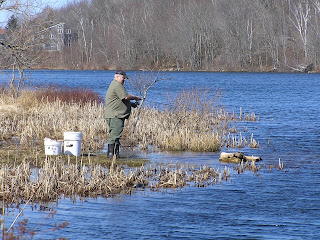This is a post created by Grace McCaffrey and group about the Dalhousie ocean pond!
Located at Dalhousie University, in a nook in
back of the chemistry building and behind the LSC, is a little
conservationist’s haven called the Ocean Pond. Initially set up to provide an
alternative to first year biology field trips, the garden boasts nine different
ecological communities. Despite its size and central location, few students
actually know about the Ocean Pond. It’s a great place to view a marshland-like
habitat and to spot squirrels and migratory birds.
Before the creation of the Ocean Pond, the
Dalhousie campus was lacking in any distinct natural areas. Dr. Martin Willison
published an article in a biology newsletter in April 1993 that painted a
picture of a greener campus with ecological gardens spread throughout. The
gardens would serve to eliminate the various issues the faculty was
encountering in trying to expose first year biology students to relatively
pristine environments, including pollution from school buses, direct damage to
said environments, high costs and time constraints.
Shortly after the article was published, Dr.
Willison, some graduate students and the Facilities Management began to draw up
and debate various proposals for the implementation of an ecological garden on
campus. Finally, in the summer of 1997, the Pond was dug in the naturally
occurring wet area where it remains today. Ocean Ltd. dug the area for free and
donated a liner, rocks from their quarry and volunteer labour. The grass in
that area was no longer mowed and later, a decomposing organic material pile and
both Gypsum and Halifax slate were added to enhance the area. The Pond is of
human construction, but is still an excellent example of the purpose of nature
conservation: conserving a space for the future.
Unfortunately, the Pond is rarely used by biology
professors today. However, it remains as an example of what happens when a plot
of land is left to its own devices. It is a beautiful spot to walk by and is
incredibly diverse despite its small size. With Dalhousie geared up to start
extensive renovations in the near future, does the Ocean Pond have a place on
campus? Will we lose one of our relatively untouched green spaces? If so, do
the new campus plans include space for other untouched pockets of ‘wilderness’?
How do we quantify the value of something as important and as abstract as
nature?
Next time you’re walking to class, stop beside
the Ocean Pond and take a minute to breathe in the sea air. You won’t regret
the clarity and focus that can come from even a moment of immersion in a space
untouched.
(All information from http://biotype.biology.dal.ca/oceanPond/Index.htm)



















































































































